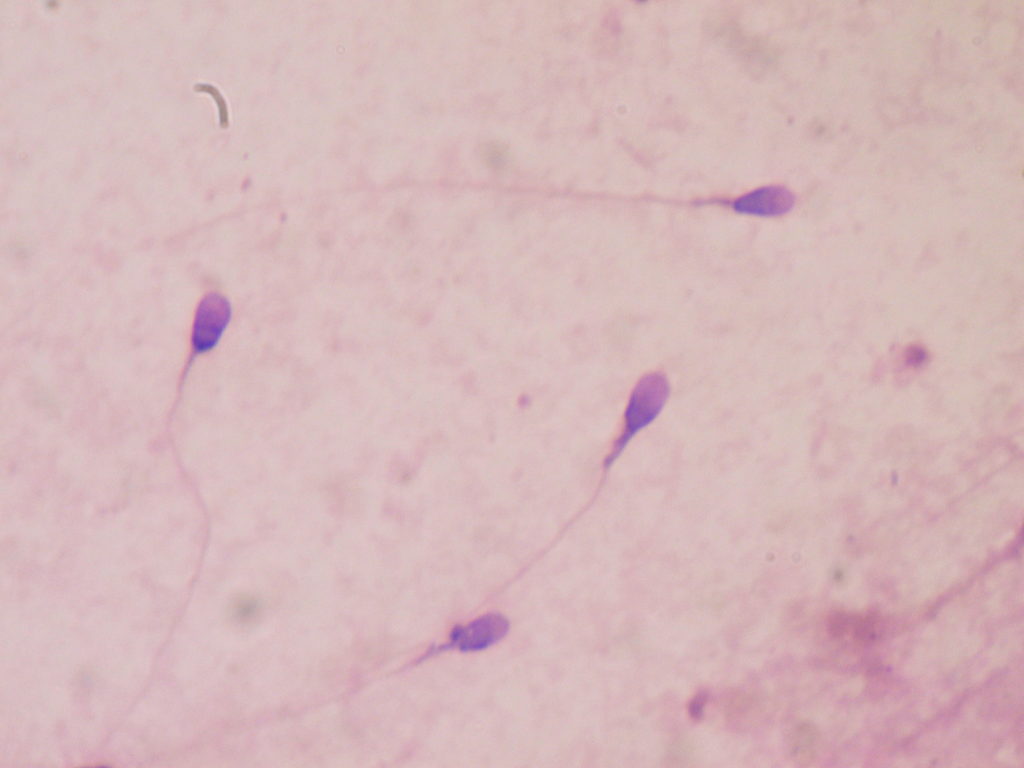Sperm quantity isn’t typically something at the top of many men’s priority lists until they want to start a family. Suddenly, they’ll find that quantity and quality matter a whole lot more than they thought.
This is when you start thinking about how to improve your sperm count. You start searching for things like how to have thicker cum or how to make more sperm after ejaculation, and other ways to improve sperm count.
But how much can a guy cum? In this article, we’re going to look at this question in detail. We’ll discuss sperm production, sperm volume, the frequency of ejaculation, and things that have an impact on sperm count.
What This Article Covers:
- Sperm Production
- Causes of Low Semen Volume
- How Much Can a Man Ejaculate?
- Conclusion: Treating Low Semen Volume
Sperm Production
Before you get too wrapped up in questions like “What happens if you cum a lot?” or “Why do I ejaculate more sometimes?”, understanding the sperm production process is key to grasping the big picture.
The process of sperm production begins in the testes.
The testes (also called testicles) are a pair of oval-shaped glands that are located in the scrotum. The scrotum is the sac of skin that hangs below the penis.
Within the testes are coiled masses of tubes called seminiferous tubules, where sperm cells are produced. Each second, a man produces around 100 sperm cells in each seminiferous tubule.
Sperm cells start out as immature cells called spermatogonia. These cells divide and multiply to produce more sperm cells. The sperm cells then undergo a process of maturation, during which they develop into mature sperm cells capable of fertilizing an egg.
The maturation process takes place in the epididymis, which is a long, coiled tube located at the back of each testicle. It can take up to two weeks for a sperm cell to mature and be released into the epididymis.
When a man is aroused, his brain signals the scrotum to release the sperm cells from the epididymis into the vas deferens. The vas deferens is a long tube running from the epididymis alongside the bladder.
During ejaculation, muscle contractions force the sperm cells through the vas deferens and up through another tube called the urethra. The urethra is the same tube that drains urine from the bladder.
When the sperm cells reach the urethra, they’re mixed with seminal fluid secreted by the seminal vesicles and prostate gland. This mixture of fluid and sperm, called semen, is then ejaculated from the tip of the penis through muscle contractions. The level of contraction affects how far a man can shoot ejaculate and how to squirt sperm.
The journey from production to ejaculation takes only a few seconds. Sperm cells are constantly being produced in the testicles; millions of new sperm cells are made daily.

Factors Affecting Sperm Production
There are many different factors that can affect sperm production in men. These include:
- Age: Sperm production generally declines with age, although the rate of decline varies from one man to another.
- Weight: Being overweight or obese can reduce sperm count and motility.
- Medical conditions: Certain medical conditions, such as diabetes, can interfere with sperm production.
- Medications: Some medications, such as certain antibiotics and anabolic steroids, can reduce sperm count.
- Environmental toxins: Exposure to certain environmental toxins, such as pesticides and heavy metals, has been linked to reduced sperm count.
- Stress: Stress can have a negative impact on both physical and mental health, including sexual function. High levels of stress can reduce sperm count. If you want to keep production going without a hitch, countering stress is essential.
Causes of Low Semen Volume
Semen volume is the amount that’s ejaculated at one time. This is an important factor in male fertility. Low sperm volume can be a sign of infertility. The normal ejaculate volume is between 1.5 and 5.0 milliliters. Semen should contain 15 million sperm per mL (sperm concentration) or more.
Anything below 1.5 milliliters is considered low and can be caused by an array of factors. Let’s run through a few of them.
Hormone Imbalances
A hormone imbalance is a common cause of low sperm volume. The hormones that affect sperm production include follicle-stimulating hormone (FSH) and testosterone.
Testosterone is the main hormone responsible for sperm production. FSH helps to stimulate the production of testosterone. If either of these hormones is not at the correct level, it can result in low sperm volume.
Varicoceles
A varicocele is a condition in which the veins that drain the testicles are dilated or enlarged. This can cause the testicles to overheat and affect sperm production. Varicoceles are present in about 15% of men with fertility problems.
Infections
Infections of the reproductive tract can lead to low sperm volume. These include sexually transmitted infections (STIs), such as chlamydia and gonorrhea. Other infections, such as mumps orchitis, can also cause low sperm volume.
Lifestyle Choices
Smoking, heavy drinking, and drug use can all affect sperm production and lead to low sperm volume.
Testicular Trauma or Surgery
Any type of trauma to the testicles can result in low sperm volume. This includes surgery to treat conditions like undescended testicles.
Other causes include blockages of the ejaculatory ducts, varicoceles (enlarged veins in the testicles), or genetic defects.
How Much Can a Man Ejaculate?
According to the International Society for Sexual Medicine, the average man ejaculate between 1.25 and 5 milliliters of semen. This is about 1/4 to 1 teaspoon. The average sperm count is 15 million sperm per mL. Most men have between 40 and 300 million sperm in each ejaculation.
It’s healthy for a man to ejaculate at least once a day. This helps to keep the sperm count at a healthy level. Sperm that isn’t ejaculated can become damaged or die.
If you ejaculate 10 and 20 million sperm per milliliter, it’s considered a low sperm count or oligospermia.
If you’re not reaching your desired healthy level, here’s how to increase male ejaculation frequency. Exercise regularly, eat a healthy diet, and avoid smoking.

Conclusion: Treating Low Semen Volume
If lifestyle changes don’t fix your problem, there are medical treatments that can help improve sperm count.
These include hormone therapy, surgery, and assisted reproductive technologies (ART). You can also be given vitamin supplements, acupuncture, and Ayurvedic medicine.
When looking to increase semen volume, It’s better, to begin with, natural products like Semenax.
Semenax ingredients are 100% natural and can boost orgasm intensity and improve ejaculatory control. These ingredients include cranberry, Sativa extract, and essential vitamins.
Have you enjoyed this piece? Then consider checking other guides:
- How to Cumshot
- How to Cum Harder
- How Do Porn Stars Cum So Much?
- Pills That Make You Cum More
- How to Increase Sperm Volume Overnight
- Why is My Sperm Volume Low?
- How Long Does It Take to Produce Seminal Fluid
- 3 Ways to Increase Seminal Fluid
- What Vitamins Increase Seminal Fluid
- How Much Zinc to Increase Sperm Volume
- What Foods Increase Seminal Fluid


